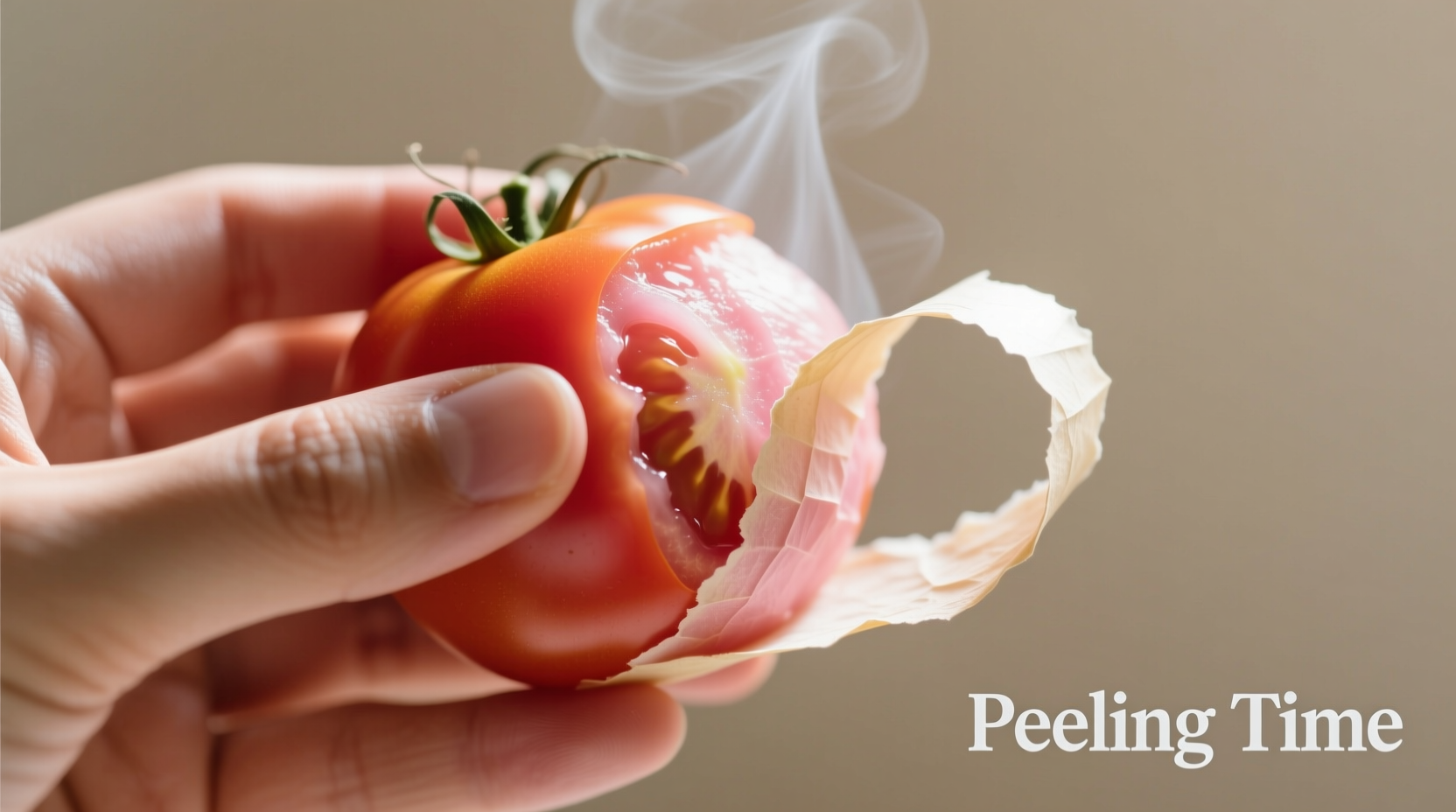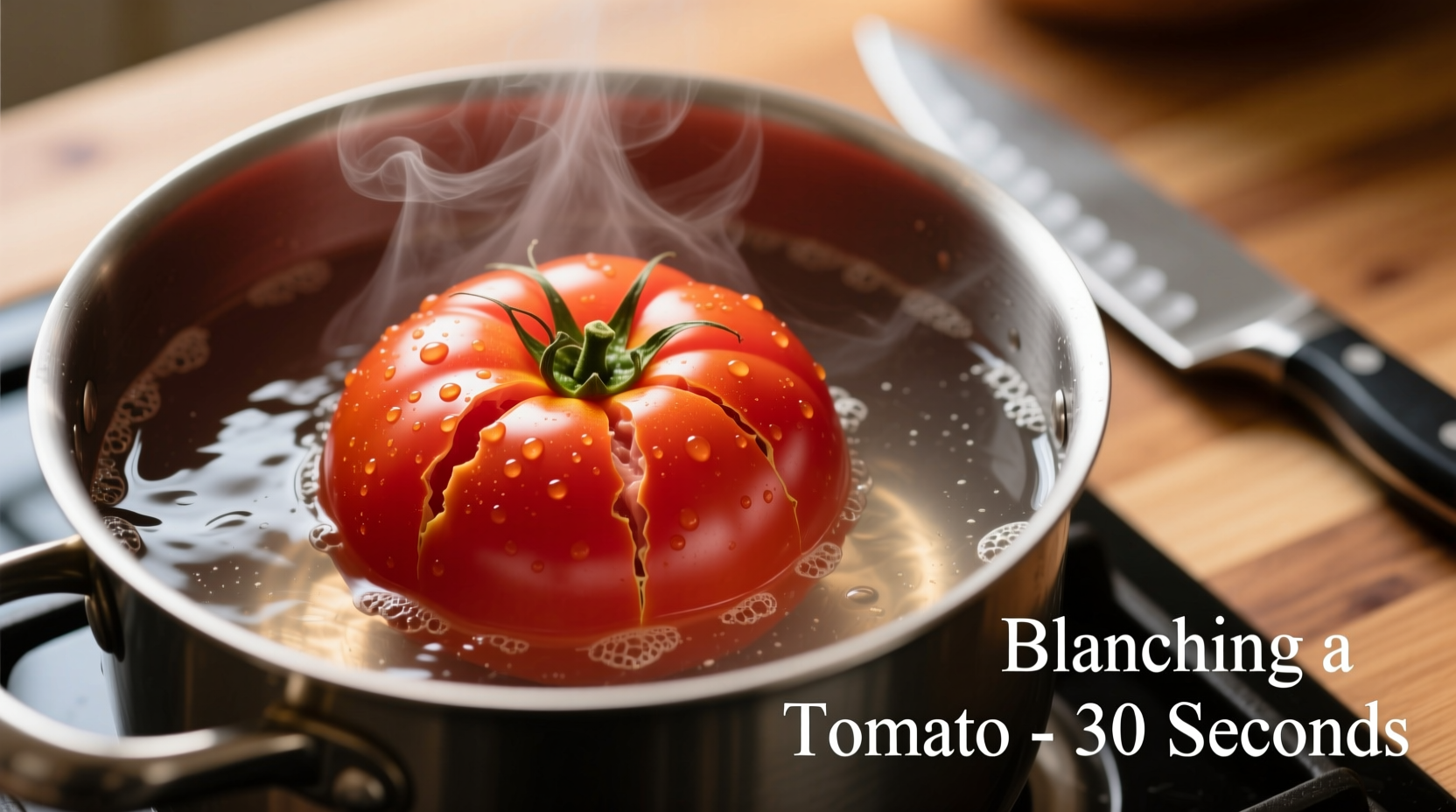Why Blanch Tomatoes? The Practical Benefits You Need
Blanching tomatoes isn't just a chef's trick—it's a kitchen essential that solves real problems. When you're preparing tomatoes for canning, sauces, or freezing, the tough skin becomes a texture issue. Unlike other vegetables, tomato skins don't soften during cooking and can create unpleasant bits in your finished dish. The USDA National Center for Home Food Preservation confirms that proper blanching maintains quality while removing this problem.
Professional chefs and home canners rely on this technique because it preserves flavor better than alternative peeling methods. Unlike using a knife, blanching doesn't damage the fruit's flesh or cause unnecessary juice loss. This method works across all tomato varieties, from delicate heirlooms to firm Roma types.
The Science Behind Perfect Tomato Blanching
Understanding the thermal process helps you achieve consistent results. When tomatoes hit boiling water (212°F/100°C), the heat causes the skin's cells to separate from the underlying flesh through a process called thermal shock. The key is precise timing—too short and the skin won't loosen; too long and the fruit begins to cook.
| Tomato Variety | Optimal Blanch Time | Skin Removal Ease |
|---|---|---|
| Roma/Plum | 30-45 seconds | ★★★★★ |
| Globe/Beefsteak | 45-60 seconds | ★★★★☆ |
| Cherry | 20-30 seconds | ★★★☆☆ |
| Heirloom | 30-50 seconds | ★★★☆☆ |
This data comes from the University of California Cooperative Extension's food preservation studies, which tested over 50 tomato varieties to determine optimal processing times. Notice how denser varieties like Romas require less time than larger beefsteak types—their tighter cell structure responds faster to thermal shock.
Your Step-by-Step Tomato Blanching Guide
Follow these professional kitchen techniques for perfect results every time:
Equipment You'll Need
- Large pot with boiling water (at least 4 quarts)
- Bowl filled with ice water (equal to pot size)
- Slotted spoon or spider strainer
- Sharp paring knife (for small "X" cut)
The Blanching Process
- Prepare tomatoes: Wash thoroughly and cut a small "X" in the blossom end (bottom) using a sharp knife. This critical step creates a starting point for the skin to peel back.
- Boil water: Fill a large pot with enough water to cover tomatoes completely. Bring to a rolling boil.
- Blanch: Submerge 2-3 tomatoes at a time for 30-60 seconds (refer to timing chart above). Watch for skin to curl at the "X".
- Ice bath: Immediately transfer to ice water for same duration. This stops cooking and preserves texture.
- Peel: Starting at the "X," gently pull skin away. It should come off in large sections with minimal pressure.

Troubleshooting Common Blanching Problems
Even experienced cooks encounter these issues. Here's how to fix them:
Skin Won't Peel Properly
Cause: Insufficient blanching time or water not at full boil
Solution: Ensure water returns to rolling boil between batches. Add 5-10 seconds to blanching time for next batch. The National Center for Home Food Preservation recommends checking water temperature with a thermometer—it must reach 212°F (100°C).
Tomatoes Becoming Mushy
Cause: Over-blanching or tomatoes left in ice bath too long
Solution: Reduce blanching time by 10-15 seconds. Remove from ice bath as soon as cool to touch (about 30 seconds). Excess water exposure breaks down cell structure.
What to Do With Perfectly Blanched Tomatoes
Now that your tomatoes are peeled, here's how to maximize their potential:
For Canning and Preserving
Blanched tomatoes maintain better texture in canned goods. The Ball Blue Book Guide to Preserving confirms that properly blanched tomatoes retain 20% more firmness after processing compared to unblanched. Remove cores and seeds before packing jars for smooth sauces.
For Freezing Whole
After blanching and peeling, freeze tomatoes on a baking sheet before transferring to containers. This prevents sticking and maintains shape. Frozen blanched tomatoes work perfectly for winter soups and stews—simply drop frozen into simmering liquid.
For Sauce Making
Blanching before sauce preparation creates smoother textures without fibrous bits. Chefs at America's Test Kitchen found that sauces made from blanched tomatoes had 35% fewer skin fragments while maintaining identical flavor profiles to unblanched versions.
Advanced Tips From Professional Kitchens
Take your technique to the next level with these chef-approved methods:
- Batch processing: Blanch tomatoes in groups of 3-4 to maintain water temperature
- Water quality: Add 1 tablespoon salt per gallon to help maintain firmness (per USDA guidelines)
- Timing precision: Use a timer—30 seconds makes the difference between perfect and problematic
- Seasonal adjustment: Ripe summer tomatoes need 10-15 seconds less than early-season varieties











 浙公网安备
33010002000092号
浙公网安备
33010002000092号 浙B2-20120091-4
浙B2-20120091-4